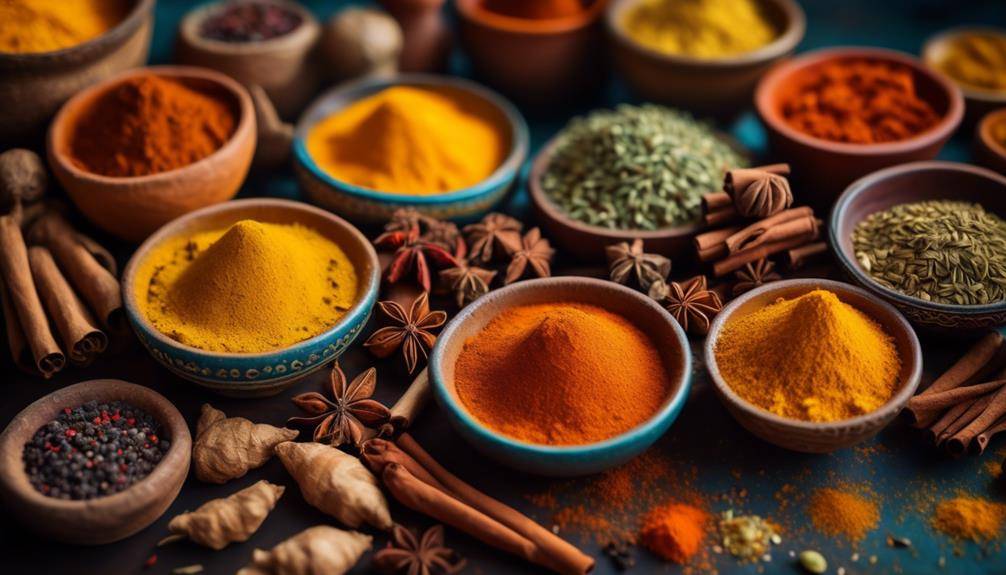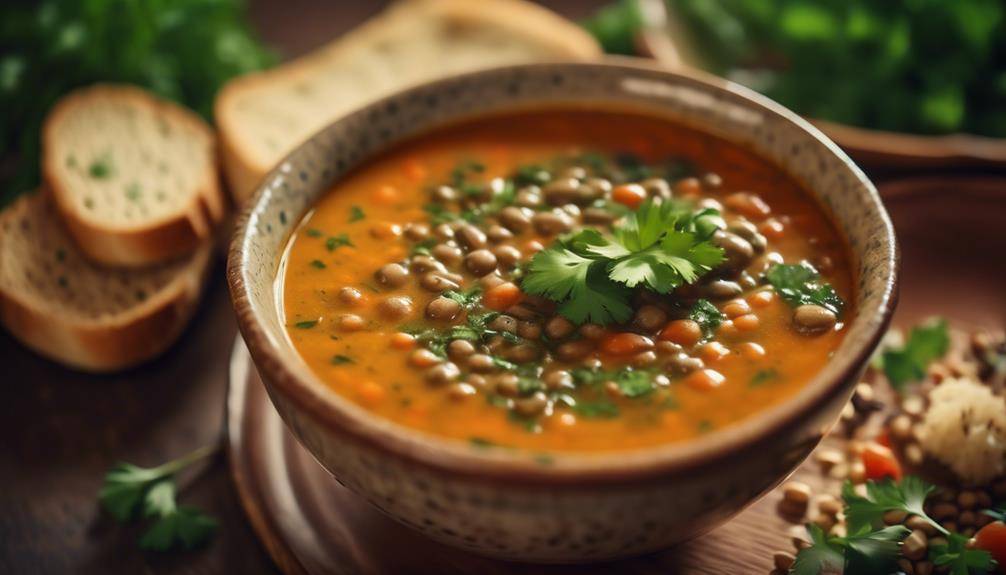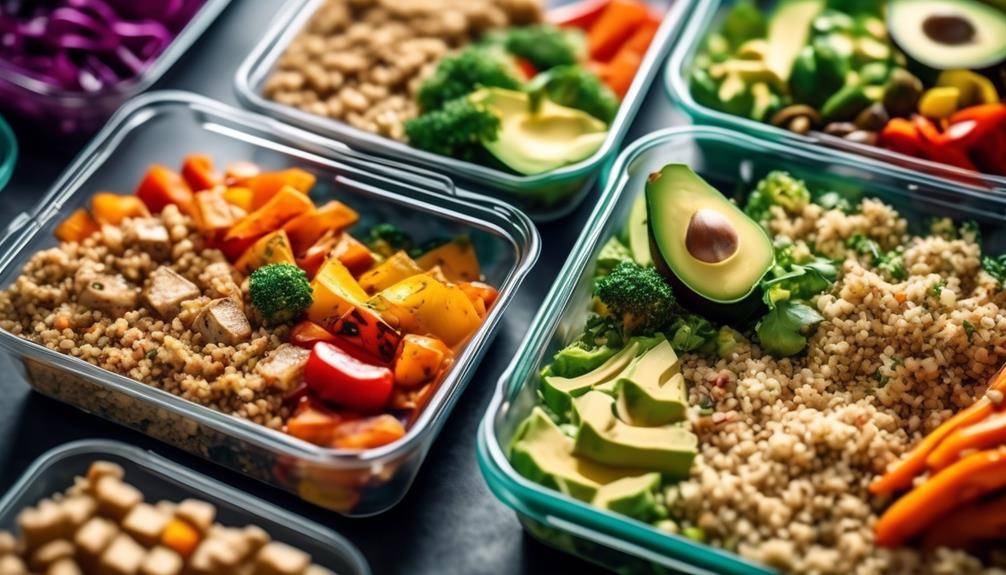Amazing Advancements In 3D Food Printing Materials

You’ve likely noticed how Advancements In 3D Food Printing Materials is changing the culinary landscape with exciting advancements. New materials, especially plant-based ingredients, give you the ability to create dishes that are not only nutritious but also visually stunning. Customizable filaments allow for unique textures and flavors, letting you experiment more than ever before. Innovations in sugar and protein are enhancing both taste and health benefits. Eco-friendly practices are also making their mark, showing a commitment to sustainability in cooking. There’s so much more happening in this dynamic field, and you’ll discover additional insights that could inspire your culinary adventures.
Overview of 3D Food Printing
3D food printing is revolutionizing the culinary world by merging technology with gastronomy. As you explore this innovative method, you’ll discover how it enhances culinary creativity, allowing chefs to experiment like never before. With 3D printers, you can create intricate designs and shapes that traditional cooking methods simply can’t achieve. This technology enables you to push the boundaries of flavor and presentation, transforming ordinary meals into extraordinary experiences.
The cultural significance of 3D food printing can’t be understated. It promotes a new way of thinking about food, encouraging you to appreciate the artistry involved in meal preparation. As you engage with this technology, you’re not just feeding your body; you’re also engaging in a dialogue about culture, sustainability, and the future of food.
Whether you’re a home cook or a professional chef, 3D food printing invites you to rethink ingredients and how they’re used. You can create personalized dishes tailored to individual tastes and dietary needs, showcasing your culinary creativity in ways that resonate with diverse cultures. As this technology advances, you’ll find it opens up endless possibilities in the kitchen, making food an even more engaging and meaningful experience.
Key Materials Used
When it comes to 3D food printing, you’ll find that plant-based ingredients and edible printing filaments are essential materials. These components not only provide flavor and texture but also guarantee the final product is safe to eat. Let’s explore how these materials work together to create innovative culinary designs.
Plant-Based Ingredients
Plant-based ingredients are revolutionizing the world of 3D food printing by offering a variety of textures and flavors that cater to diverse dietary preferences. These ingredients serve as alternative sources to traditional animal-based products, enabling you to create innovative dishes that appeal to vegans, vegetarians, and flexitarians alike.
You can use a range of plant-based materials, such as legumes, grains, and vegetables, to formulate unique recipes. For instance, you might experiment with chickpea flour or quinoa to produce high-protein options, while also enjoying the versatility of carrots or beets for vibrant color and taste.
In culinary applications, plant-based ingredients allow for experimentation with different shapes and designs, enhancing the visual appeal of your creations. You’ll find that combining various plant materials can lead to exciting flavor profiles, making your dishes stand out.
Moreover, as the demand for sustainable food options grows, using plant-based ingredients in 3D food printing aligns with eco-conscious practices. By embracing these ingredients, you can contribute to a more sustainable food system while satisfying your culinary creativity.
Edible Printing Filaments
Choosing the right materials is key to successful edible printing, and various filaments are now available to bring your culinary visions to life. One of the most popular options is sugar-based filaments, perfect for creating intricate designs and sweet treats. These filaments not only offer excellent printability but also allow for custom flavoring, so you can tailor each creation to your taste.
Another option is protein-based filaments, which provide a unique texture variability. These materials can mimic the consistency of various foods, making them ideal for savory dishes or even meat alternatives. By experimenting with different blends, you can achieve the right mouthfeel and flavor profile.
Additionally, you’ll find vegetable-based and starch-based filaments, which are versatile and can be infused with natural colors and flavors. This opens up a world of possibilities for artists and chefs alike, enabling you to create not just visually stunning but also delicious culinary masterpieces.
As you explore these edible printing filaments, remember that the right choice will enhance both the aesthetic and the taste of your 3D-printed creations. Your imagination is the only limit when it comes to designing flavorful, edible art.
Plant-Based Innovations
Exploring plant-based innovations in 3D food printing opens up exciting possibilities for sustainable culinary creations. You can create unique dishes that not only satisfy appetites but also contribute to environmental sustainability. By utilizing plant-based materials, you have the chance to experiment with diverse plant-based textures that mimic traditional foods, enhancing the dining experience.
Imagine printing intricate designs with ingredients like pea protein, algae, or even lentils. These materials allow you to craft various flavor profiles, catering to a wide range of dietary preferences. You can produce everything from savory dishes to sweet treats, appealing to both vegans and omnivores alike.
With advancements in 3D printing technology, you can now achieve greater precision in texture and flavor, ensuring that every bite meets your expectations. This means you can tailor your creations to specific tastes while maintaining nutritional value. The ability to customize recipes based on personal preferences and dietary needs not only elevates your culinary game but also encourages a more sustainable approach to food consumption.
Plant-based innovations in 3D food printing truly empower you to redefine how we think about food and sustainability.
Sugar and Confectionery Advances
The world of 3D food printing isn’t just limited to savory dishes; it also embraces the art of sugar and confectionery. You can create stunning sugar sculptures that captivate the eye and tantalize the taste buds. With advancements in materials, the possibilities for designing intricate shapes and patterns have expanded dramatically.
Imagine using a 3D printer to produce delicate sugar flowers or elaborate cake toppers that would’ve taken hours to craft by hand. These printers allow you to experiment with various confectionery textures, enabling you to create everything from smooth, glossy finishes to rough, textured surfaces.
By adjusting the parameters, you can customize the sweetness and hardness of your creations, tailoring them to suit your specific needs. This innovation opens doors for professional pastry chefs and home bakers alike, making it easier to push the boundaries of traditional confectionery art.
As you immerse yourself in this sweet domain of 3D printing, you’ll discover how technology can enhance your creativity, turning your sugary dreams into reality. Embrace these advancements, and watch your ideas take shape in ways you never thought possible!
Protein and Nutritional Enhancements
When you think about enhancing your meals, consider how 3D food printing can incorporate plant-based proteins and functional nutritional additives. These innovations not only boost the nutritional profile of your food but also promote sustainable ingredient sourcing. You’ll find that these advancements can transform your dining experience while aligning with your health goals.
Plant-Based Protein Innovations
Innovations in plant-based protein are reshaping the landscape of nutritional enhancements, offering exciting possibilities for 3D food printing. As you explore these advancements, you’ll find that the development of protein-rich formulations is at the forefront. These formulations not only enhance the nutritional profile of your printed foods but also create diverse and appealing plant-based textures.
With the rise of alternative proteins like pea, lentil, and even algae, you can now experiment with a variety of ingredients that cater to different dietary preferences. These proteins can mimic the mouthfeel and structure of animal-based products, allowing you to create dishes that satisfy both taste and texture. Imagine crafting a delicious burger or a gourmet pasta dish using innovative plant-based materials that are not only nutritious but also sustainable.
Moreover, the ability to customize these protein-rich formulations enables you to tailor meals according to individual dietary needs, whether you’re aiming for higher protein content or specific amino acid profiles. As you immerse yourself in 3D food printing, these innovations in plant-based protein will empower you to create healthier, more sustainable, and appealing food options.
Functional Nutritional Additives
Many people are discovering the benefits of functional nutritional additives in 3D food printing, particularly when it comes to enhancing protein content and overall nutrition. These additives can greatly improve the nutritional bioavailability of the food you create, ensuring that your body absorbs more essential nutrients efficiently. By incorporating protein-rich ingredients and other functional formulations, you can tailor your meals to meet specific dietary needs, whether you’re looking to boost muscle recovery or enhance overall health.
Functional nutritional additives allow for innovative combinations of proteins, vitamins, and minerals, providing a customizable approach to nutrition. You can experiment with various textures and flavors, all while maintaining the nutritional integrity of your meals. With 3D food printing technology, you can design intricate food structures that not only look appealing but also deliver the desired health benefits.
As you explore this exciting frontier, consider how these additives can elevate your culinary creations. By leveraging the power of functional nutritional enhancements, you’ll be able to craft meals that are both satisfying and nutritionally superior, setting a new standard for your dining experience. Embrace the possibilities of 3D food printing and take charge of your nutrition today!
Sustainable Ingredient Sourcing
Sourcing sustainable ingredients is essential for enhancing protein content and nutritional value in 3D food printing. By prioritizing local sourcing, you not only support your community but also reduce the carbon footprint associated with transportation. Ingredient traceability guarantees that you know exactly where your ingredients come from, fostering trust and transparency in your supply chain.
Engaging with local producers promotes ethical production practices, leading to higher quality and more nutritious ingredients. When you choose seasonal availability, you can take advantage of peak freshness while minimizing waste. This approach also encourages a connection with the environment, allowing you to adapt your recipes based on what’s available.
Waste reduction is another critical factor in sustainable sourcing. By selecting ingredients that can be efficiently utilized in the printing process, you minimize leftovers and promote a circular economy. Additionally, eco-friendly packaging options for your ingredients can further reduce your environmental impact.
Incorporating these practices not only elevates the nutritional profile of your printed food but also aligns your work with growing consumer demand for sustainability. You’re not just feeding people; you’re contributing to a healthier planet.
Sustainable Material Developments
As the demand for eco-friendly solutions grows, researchers are exploring sustainable materials for 3D food printing that not only enhance culinary creativity but also reduce environmental impact. You’ll find that biodegradable composites are at the forefront of these developments. These materials, derived from renewable resources, not only allow you to print unique food shapes but also decompose naturally, making them a more responsible choice for the planet.
Incorporating such composites into your food printing projects can lead to significant waste reduction. By utilizing byproducts from agriculture or food processing, you’re not just minimizing waste but also creating a closed-loop system that benefits the environment. Imagine creating intricate designs using materials that would otherwise end up in landfills.
Moreover, the advancements in these materials mean you can experiment with different textures and flavors in your culinary creations while knowing you’re contributing to sustainability. As you dive deeper into the world of 3D food printing, embracing these sustainable material developments will empower you to make eco-conscious decisions without sacrificing creativity or quality.
Future Trends in Food Printing
While the world of 3D food printing has already made significant strides, you can expect even more innovative trends to emerge in the coming years. One of the most exciting developments is flavor customization. Imagine being able to print a dish that not only looks stunning but also caters to your unique taste preferences. As technology advances, you’ll have the ability to tweak flavors at the molecular level, creating a truly personalized dining experience.
Culinary creativity will also reach new heights. With the integration of artificial intelligence and machine learning, chefs and home cooks alike will have access to sophisticated tools that suggest recipes tailored to your dietary needs and flavor profiles. You’ll be able to experiment with textures and presentations that were once unimaginable.
Moreover, as sustainability continues to be a priority, you’ll witness an increase in eco-friendly materials that don’t compromise on taste. The future of food printing isn’t just about convenience; it’s about an immersive experience that invites you to explore and create like never before. Embrace these trends, and you’ll find that 3D food printing is reshaping the way we think about cooking and dining.
Frequently Asked Questions: Advancements In 3D Food Printing Materials
What Are the Health Implications of 3D Printed Food?
When considering 3D printed food, you should evaluate its nutritional value and ingredient safety. Not all materials used may meet health standards, so it’s essential to research and choose wisely for your well-being.
How Does 3D Food Printing Impact Food Waste?
3D food printing reduces food waste by optimizing resource efficiency, allowing you to create meals tailored to exact portions. This technology offers sustainability benefits, helping you minimize excess and utilize ingredients more effectively in your cooking.
Are There Regulatory Challenges for 3D Printed Food Products?
Yes, there’re regulatory challenges for 3D printed food products. You’ll need to navigate complex regulatory frameworks and guarantee compliance with safety standards, which can vary considerably between regions and affect product acceptance in the market.
Can 3D Food Printing Accommodate Food Allergies?
Yes, 3D food printing can accommodate food allergies. You can utilize allergen detection technologies and ingredient customization to create safe meals tailored to individual needs, ensuring a delicious experience without triggering any allergies.
What Is the Cost Comparison Between Traditional and 3D Printed Food?
When you compare costs, traditional food often involves higher ingredient sourcing expenses, while 3D printed food can offer cost efficiency through precise materials usage, potentially lowering overall expenses and creating more customized culinary options for you.
Conclusion
To sum up, the advancements in 3D food printing materials are reshaping how you think about food creation. With plant-based innovations and sustainable options, you can enjoy healthier, more personalized meals. The progress in sugar and protein formulations means delightful treats and enhanced nutrition are just a print away. As technology continues to evolve, you’ll likely see even more exciting trends that transform your dining experience into a creative culinary adventure.








